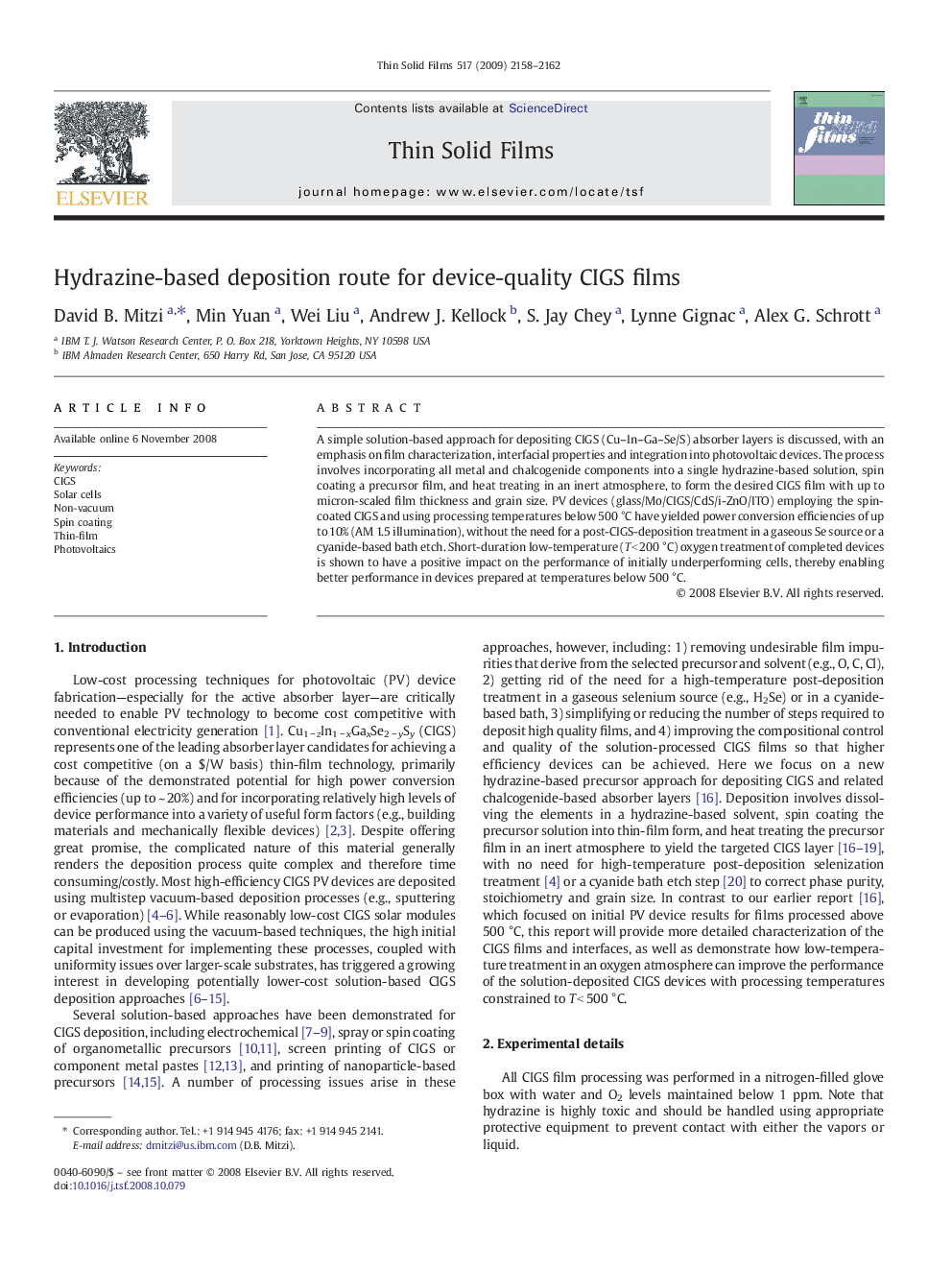| کد مقاله | کد نشریه | سال انتشار | مقاله انگلیسی | نسخه تمام متن |
|---|---|---|---|---|
| 1671148 | 1008912 | 2009 | 5 صفحه PDF | دانلود رایگان |

A simple solution-based approach for depositing CIGS (Cu–In–Ga–Se/S) absorber layers is discussed, with an emphasis on film characterization, interfacial properties and integration into photovoltaic devices. The process involves incorporating all metal and chalcogenide components into a single hydrazine-based solution, spin coating a precursor film, and heat treating in an inert atmosphere, to form the desired CIGS film with up to micron-scaled film thickness and grain size. PV devices (glass/Mo/CIGS/CdS/i-ZnO/ITO) employing the spin-coated CIGS and using processing temperatures below 500 °C have yielded power conversion efficiencies of up to 10% (AM 1.5 illumination), without the need for a post-CIGS-deposition treatment in a gaseous Se source or a cyanide-based bath etch. Short-duration low-temperature (T < 200 °C) oxygen treatment of completed devices is shown to have a positive impact on the performance of initially underperforming cells, thereby enabling better performance in devices prepared at temperatures below 500 °C.
Journal: Thin Solid Films - Volume 517, Issue 7, 2 February 2009, Pages 2158–2162